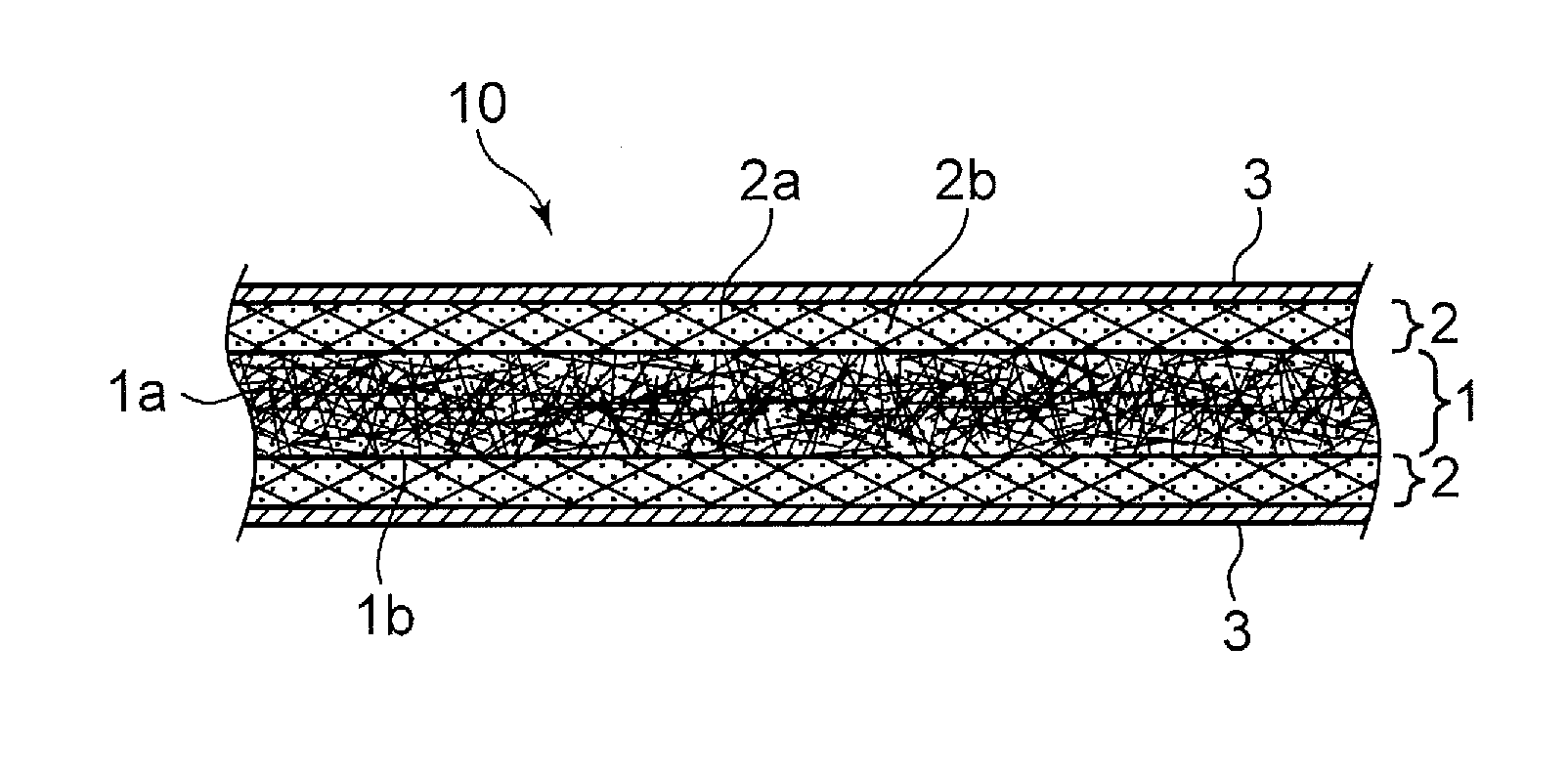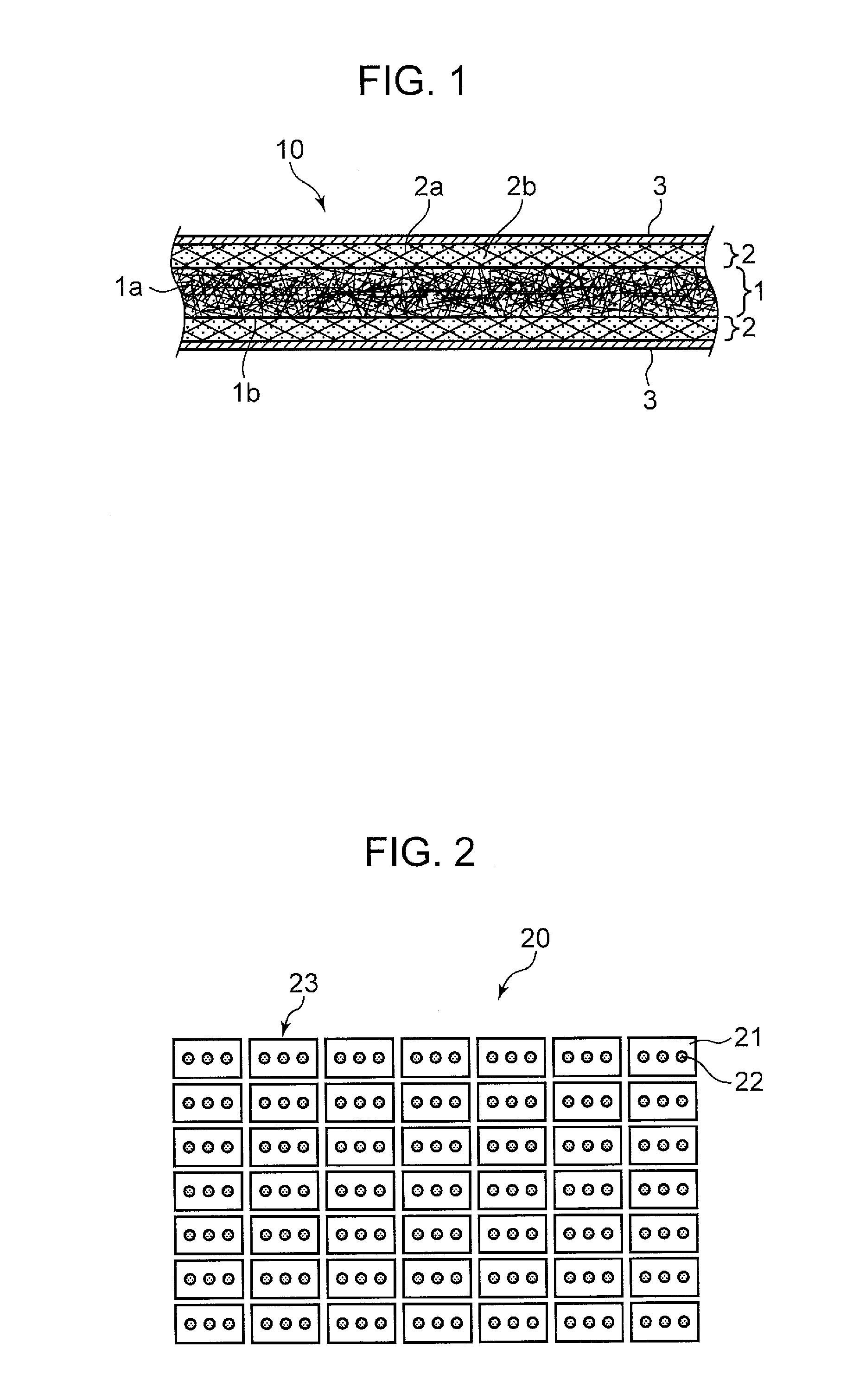Thermosetting resin composition, prepreg, laminate, metal foil-clad laminate, and circuit board
a technology of thermosetting resin and resin composition, which is applied in the field of thermosetting resin composition, prepreg, laminate, metal foil-clad laminate, and circuit boards, can solve the problems of insufficient heat dissipation properties, problems with conventional laminates, and substrates used for such applications, and achieves the effect of satisfying all features required in printed wiring boards
- Summary
- Abstract
- Description
- Claims
- Application Information
AI Technical Summary
Benefits of technology
Problems solved by technology
Method used
Image
Examples
example 1
Production of Prepreg
[0094]Herein, 57 parts by volume of an inorganic filler with respect to 100 parts by volume of the thermosetting resin solids and inorganic filler were incorporated into a thermosetting resin varnish that contained the phosphorus-containing epoxy resin prepared in accordance with the above method and a dicyandiamide (Dicy)-based curing agent. In the inorganic filler there were blended, and uniformly dispersed, 57 parts by volume of gibbsite-type aluminum hydroxide (by Sumitomo Chemical, D50: 5.4 μm), 38 parts by volume of aluminum oxide (by Sumitomo Chemical, D50: 0.76 μm), and 5 parts by volume of zinc molybdate-treated talc (by Sherwin-Williams), with respect to 100 parts by volume of the inorganic filler. Glass cloth (by Nitto Boseki) having a basis weight of 47 g / m2 and a thickness of 53 μm was impregnated with the resin varnish having the filler blended thereinto, to yield a prepreg. The cloth volume was 20 vol %.
[0095]
[0096]Herein, eight sheets of the obta...
PUM
| Property | Measurement | Unit |
|---|---|---|
| Fraction | aaaaa | aaaaa |
| Fraction | aaaaa | aaaaa |
| Fraction | aaaaa | aaaaa |
Abstract
Description
Claims
Application Information
 Login to View More
Login to View More - R&D
- Intellectual Property
- Life Sciences
- Materials
- Tech Scout
- Unparalleled Data Quality
- Higher Quality Content
- 60% Fewer Hallucinations
Browse by: Latest US Patents, China's latest patents, Technical Efficacy Thesaurus, Application Domain, Technology Topic, Popular Technical Reports.
© 2025 PatSnap. All rights reserved.Legal|Privacy policy|Modern Slavery Act Transparency Statement|Sitemap|About US| Contact US: help@patsnap.com



